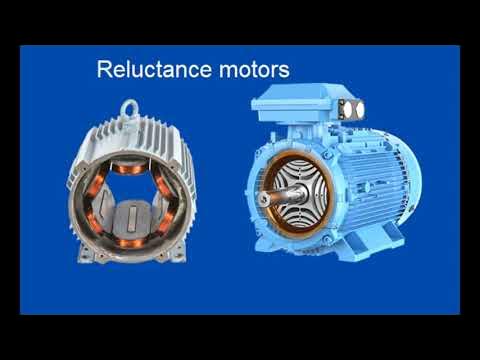Electric VS Gas Car | How Electric Cars Work
Summary
TLDRElectric cars have been around much longer than most people think, with early prototypes dating back to the 19th century. Despite initial success, electric cars were overtaken by gasoline vehicles due to limited range and speed. However, advancements in technology, environmental concerns, and the search for renewable energy solutions have brought electric cars back into the spotlight. The video delves into the science behind electric vehicles, explaining how they work, their efficiency, and the growing movement towards sustainable transportation. It also highlights the costs, challenges, and future prospects of electric cars.
Takeaways
- 😀 Electric cars aren't a modern invention – the idea dates back to the 19th century with early prototypes from engineers like Ányos Jedlik and Thomas Davenport.
- 😀 The electric car market once thrived in the late 1800s but faded due to limitations in speed, range, and the rise of fossil-fuel vehicles.
- 😀 Electric cars gained popularity again in the 21st century due to technological advancements, environmental concerns, and the need for sustainable energy.
- 😀 The science behind electric cars is based on alternating current (AC), thanks to Nikola Tesla, which powers the electric engine in these vehicles.
- 😀 Electric cars use lithium-ion batteries located under the floor for better space efficiency, longer lifespan, and higher power density.
- 😀 These vehicles utilize regenerative braking, which turns kinetic energy into electricity and sends it back to the battery, making them energy-efficient.
- 😀 Charging an electric car can be done in three levels: slow home charging, faster charging at a station, and ultra-fast direct current charging.
- 😀 Electric car costs are low for operation and maintenance, with annual operating costs being much cheaper than traditional gas-powered vehicles.
- 😀 Replacing an electric car battery is expensive, but most manufacturers offer warranties for up to 8 years or 100,000 miles.
- 😀 Many countries are pushing for electric and hybrid vehicles in the coming years, with Europe expecting all cars to be electric by 2025.
- 😀 Despite a higher initial purchase price, electric cars' lower operating and maintenance costs make them an attractive long-term investment.
Q & A
When did the first electric motor prototype come into existence?
-The first electric motor prototype was invented in 1828 by Hungarian engineer Ányos Jedlik.
Who was the first to create a small model car powered by electricity?
-Ányos Jedlik was the first to create a small model car powered by electricity in 1828.
What major improvement did Gaston Plante make in 1859 for electric cars?
-In 1859, Gaston Plante invented the lead-acid battery, which significantly improved the performance of electric cars.
Why did electric cars fall out of favor by the 1920s?
-Electric cars fell out of favor by the 1920s because gasoline cars offered better efficiency, longer range, and lower prices due to mass production.
What was a major advantage of electric cars in the late 19th and early 20th centuries?
-Electric cars were quieter, didn't emit the unpleasant gasoline smell, and were easier to start compared to steam-powered and gasoline cars.
How did the introduction of the electric starter affect electric cars?
-The electric starter made gasoline cars more convenient, contributing to the decline of electric cars as they no longer had a significant advantage.
What is the main difference between direct current (DC) and alternating current (AC)?
-Direct current (DC) flows in one direction only, while alternating current (AC) changes direction periodically.
How does the induction motor work in electric cars?
-The induction motor in electric cars takes alternating current from the inverter and generates a rotating magnetic field that turns the motor, powering the vehicle.
How does regenerative braking work in electric cars?
-When an electric car brakes, the induction motor converts the kinetic energy into electricity, which is then stored back in the battery for later use.
What are the three main levels of electric car charging?
-The three main levels of electric car charging are: Level 1 (basic home charging), Level 2 (using Electric Vehicle Supply Equipment for faster charging), and Level 3 (DC charging stations that charge up to 80% in under half an hour).
Outlines

Cette section est réservée aux utilisateurs payants. Améliorez votre compte pour accéder à cette section.
Améliorer maintenantMindmap

Cette section est réservée aux utilisateurs payants. Améliorez votre compte pour accéder à cette section.
Améliorer maintenantKeywords

Cette section est réservée aux utilisateurs payants. Améliorez votre compte pour accéder à cette section.
Améliorer maintenantHighlights

Cette section est réservée aux utilisateurs payants. Améliorez votre compte pour accéder à cette section.
Améliorer maintenantTranscripts

Cette section est réservée aux utilisateurs payants. Améliorez votre compte pour accéder à cette section.
Améliorer maintenantVoir Plus de Vidéos Connexes

Sweatshops: A Sad Truth that still continues

Betavolt Baterai Nuklir Revolusioner Buatan China, Seperti Apa Teknologinya? Hoax atau Fakta?

KAMAR GELAP 21: Tirto Andayanto dan Siasat Memulai Bisnis Fotografi

Origins Of Cendol: Singaporean, Malaysian, Or Javanese? | On The Red Dot: Food Fight - Part 4/4

Made: How Millions of Pairs of Levi's Jeans are Sewn in Factory

Reluctance motors explained
5.0 / 5 (0 votes)
